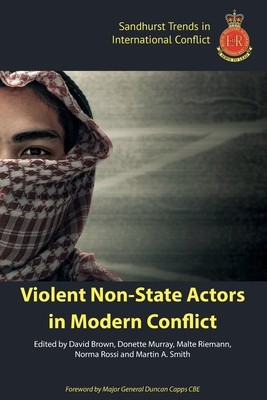
- We will send in 10–14 business days.
- Publisher: Howgate Publishing Limited
- ISBN-10: 1912440202
- ISBN-13: 9781912440207
- Format: 15.6 x 23.4 x 1.3 cm, minkšti viršeliai
- Language: English
- SAVE -10% with code: EXTRA
Violent Non-State Actors in Modern Conflict (e-book) (used book) | bookbook.eu
Reviews
Description
Recent conflicts such as those in Syria, Libya, Iraq and Afghanistan are increasingly characterised by a pluralisation of irregular and privatised forms of violence. These actors include, among others, warlords, mercenaries, terrorists, transnational organised crime groups, foreign fighters and Private Military and Security Companies (PMSCs). While some pose a direct challenge to the state, others are in a complementary and symbiotic relationship with it. As such, violent non-state actors are both competing and cooperating with state actors in modern conflicts and their hybrid nature raises questions with regards to how best to understand these actors, as they often escape neatly defined categorisations. In modern conflicts the lines between terrorists and organised crime groups, irregular and regular forces, as well as economic and political motivations to fight, are increasingly blurred. As a result, 'new' and 'old' types of violent non-state actors are defining elements of modern conflict. The extreme complexity of twenty-first century conflicts requires a more integrated approach between military and civilian actors in order to respond more effectively to its challenges.
EXTRA 10 % discount with code: EXTRA
The promotion ends in 22d.07:14:50
The discount code is valid when purchasing from 10 €. Discounts do not stack.
- Publisher: Howgate Publishing Limited
- ISBN-10: 1912440202
- ISBN-13: 9781912440207
- Format: 15.6 x 23.4 x 1.3 cm, minkšti viršeliai
- Language: English English
Recent conflicts such as those in Syria, Libya, Iraq and Afghanistan are increasingly characterised by a pluralisation of irregular and privatised forms of violence. These actors include, among others, warlords, mercenaries, terrorists, transnational organised crime groups, foreign fighters and Private Military and Security Companies (PMSCs). While some pose a direct challenge to the state, others are in a complementary and symbiotic relationship with it. As such, violent non-state actors are both competing and cooperating with state actors in modern conflicts and their hybrid nature raises questions with regards to how best to understand these actors, as they often escape neatly defined categorisations. In modern conflicts the lines between terrorists and organised crime groups, irregular and regular forces, as well as economic and political motivations to fight, are increasingly blurred. As a result, 'new' and 'old' types of violent non-state actors are defining elements of modern conflict. The extreme complexity of twenty-first century conflicts requires a more integrated approach between military and civilian actors in order to respond more effectively to its challenges.


Reviews